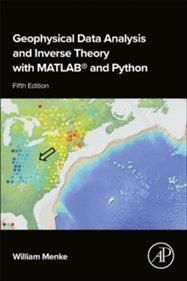Introduction to Seismology, 3 Revised edition
◆日本地質学会第132年学術大会セール 開催中!:2025年10月24日(金)ご注文分まで
※上記表示の販売価格は割引適用後の価格です 出版済み 3-5週間でお届けいたします。 Title: Introduction to Seismology, 3 Revised edition Author: Shearer, Peter M. (University of California, San Diego) Publisher: Cambridge University Press ISBN: 9781316635742 Cover: PAPERBACK Date: 2019年05月 こちらの商品は学校・法人様向け(機関契約)のオンラインブック版がございます。 オンラインブックの価格、納期につきましては弊社営業員または当ECサイトよりお問い合わせください。  DESCRIPTION This third edition provides a concise yet approachable introduction to seismic theory, designed as a first course for graduate students or advanced undergraduate students. It clearly explains the fundamental concepts, emphasizing intuitive understanding over lengthy derivations, and outlines the different types of seismic waves and how they can be used to resolve Earth structure and understand earthquakes. New material and updates have been added throughout, including ambient noise methods, shear-wave splitting, back-projection, migration and velocity analysis in reflection seismology, earthquake rupture directivity, and fault weakening mechanisms. A wealth of both reworked and new examples, review questions and computer-based exercises in MATLAB/Python give students the opportunity to apply the techniques they have learned to compute results of interest and to illustrate Earth's seismic properties. More advanced sections, which are not needed to understand the other material, are flagged so that instructors or students pressed for time can skip them. Offers a concise yet accessible introduction to seismic theory, with a focus on the mathematical fundamentals of global seismology Includes both revised and new examples, review questions and computational exercises, giving students the opportunity to apply the techniques they have learned to compute key results and illustrate Earth's seismic properties Computer code examples in this book are now in MATLAB/Python rather than in Fortran TABLE OF CONTENTS 1. Introduction 2. Stress and strain 3. The seismic wave equation 4. Ray theory: travel times 5. Inversion of travel time data 6. Ray theory: amplitude and phase 7. Reflection seismology and related topics 8. Surface waves and normal modes 9. Earthquakes and source theory 10. Earthquake prediction 11. Seismometers and seismographs 12. Earth noise 13. Anisotropy Appendix A Appendix B Appendix C Appendix D Appendix E Appendix F Bibliography Index. 最近チェックした商品

|
||||||||||||||||||||||||||||||||||||||||||||||||


























